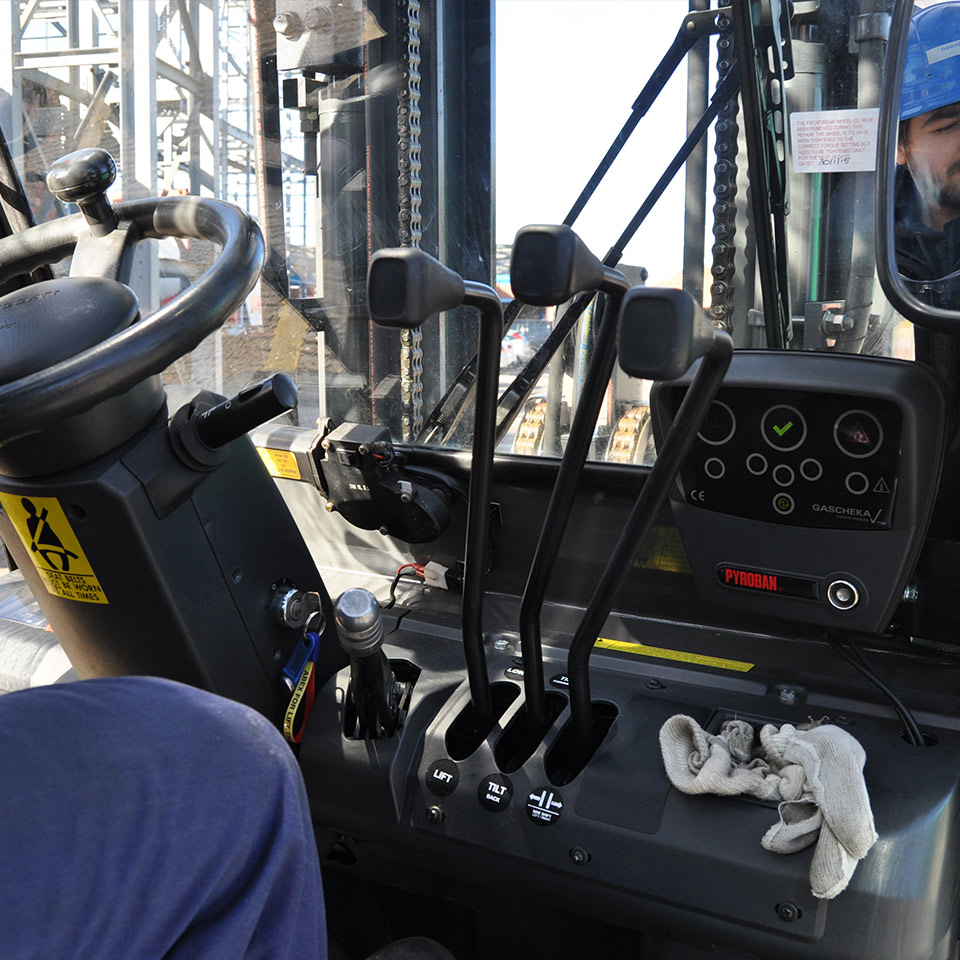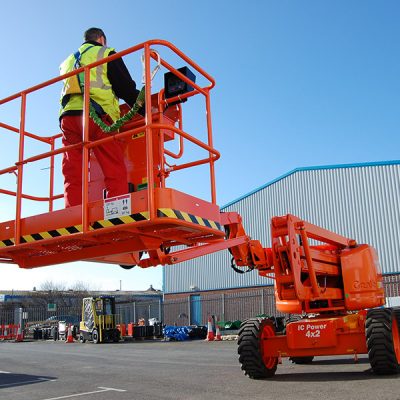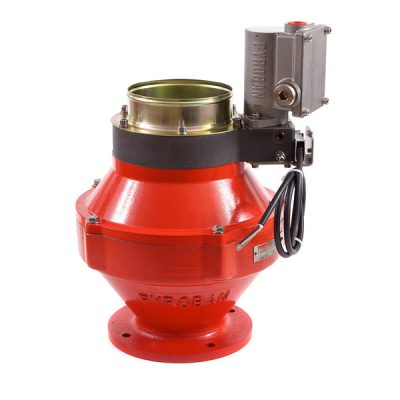Gas detection for any vehicle – Gascheka Zone 3
Gascheka “Zone 3” provides a flexible safety solution for areas where explosive atmospheres may occur, but not in such quantities that full ATEX compliant Zone 2 or Zone 1 solutions are required.
These areas may be deemed as “non-hazardous” within the meaning of the ATEX Directive, as they fall outside of the formally classified hazardous areas where a release of gas or vapour could occur in normal operation.
These “non-hazardous” areas adjacent to Zone 2 may still present explosion risks, because a gas or vapour released under pressure does not recognise boundaries such as a line or warning sign.
It only takes one spark to cause an explosion. Forklift trucks and other mobile equipment such as cranes and access platforms are an obvious ignition source, so it is possible for ignition to originate on vehicles in these unclassified areas. Often, it is also easy for vehicles to cross from a “non-hazardous” area into a Zone 2 area without realising it, for example a forklift moving pallets from a storage area into a loading bay ready for despatch.
Gas Detection for forklifts, pallet and reach trucks, VNA, pickers…
Gascheka “Zone 3” is a relatively low-cost ancillary gas detection system that monitors the surrounding area of any type of vehicle, from forklift trucks and pallet stackers to vans and transportation vehicles.
If Gascheka “Zone 3” detects a gas or vapour release, an audible and visual warning will alert the operator or driver so that the issue can be investigated and rectified. If the gas level increases to a higher level, Gascheka “Zone 3” will safely shut off the ignition electrical system.
- If gas/vapour is detected at 10% LEL (propane in air) the driver gets visual/audible warnings
- If gas/vapour levels rise to 25% LEL (propane in air) the truck will automatically be brought to a controlled stop preventing any explosions and protecting the driver and site.
A control module provides an interface between the operator and the equipment, and is fitted within easy reach of the operator. It is used to start the system and informs the operator when any gas is detected.
Gascheka “Zone 3” can be installed onsite in less than half a day to any type of diesel, electric or LPG equipment used in many industries such as waste, chemicals, refineries, food and drink, retail logistics and many more.
Features – common for diesel, LPG and electric vehicles
One of two gas sensing head technologies, Pellistor or Infrared. Pellistor and Infrared offer different degrees of protection for different gases/vapours, so it is important to select the correct gas sensing head for your application and risk.
Any equipment fitted with Pyroban Gascheka “Zone 3” requires a gas test before it will allow the vehicle to start up. The gas test is started automatically and takes between 30 and 120 seconds, depending on the type of gas sensing head. The gas test checks that the gas sensing heads are calibrated correctly, ensuring that your equipment is fully protected before operation begins.
Sales Datasheets
- ENG – PD1003ENG_issue4_Gascheka duo_datasheet
- FR – PD1003FRA_issue4_Gascheka duo_datasheet
- DE – PD1003GER_issue4_Gascheka duo_datasheet
- IT – PD1003ITA_issue4_Gascheka duo_datasheet
- NL – PD1003NL_issue4_Gascheka duo_datasheet
- ESP – PD1003SPA_issue4_Gascheka duo_datasheet
Gascheka Duo Installation Manual
- ENG – Gascheka duo Operation Servicing Installation Manual – Issue 1 Part number PM1083ENG
- FR – Gascheka duo Operation Servicing Installation Manual – Issue 1 Part Number PM1083FRA
- IT – Gascheka duo Operation Servicing Installation Manual – issue 1 Part number PM1083ITA
- NL – Gascheka duo Operation Servicing Installation Manual – Issue 1 Part number PM1083NL
- ESP – Gascheka duo Operation Servicing Installation Manual – Issue 1 Part number PM1083SPA
SUPPORT THROUGH THE LIFECYCLE
We understand that our customers need maximum up time and that the harsh locations they operate in may mean special training or certification is required. We Support our customers throughout the lifecycle of the equipment with a highly experienced and qualified team of Service technicians.
What is Added Safety?
If you need to know more about added safety, you can find out more on our what is added safety page. Alternatively, we can support you by visiting your site, or over the phone, no matter how much experience you have of hazardous areas.





